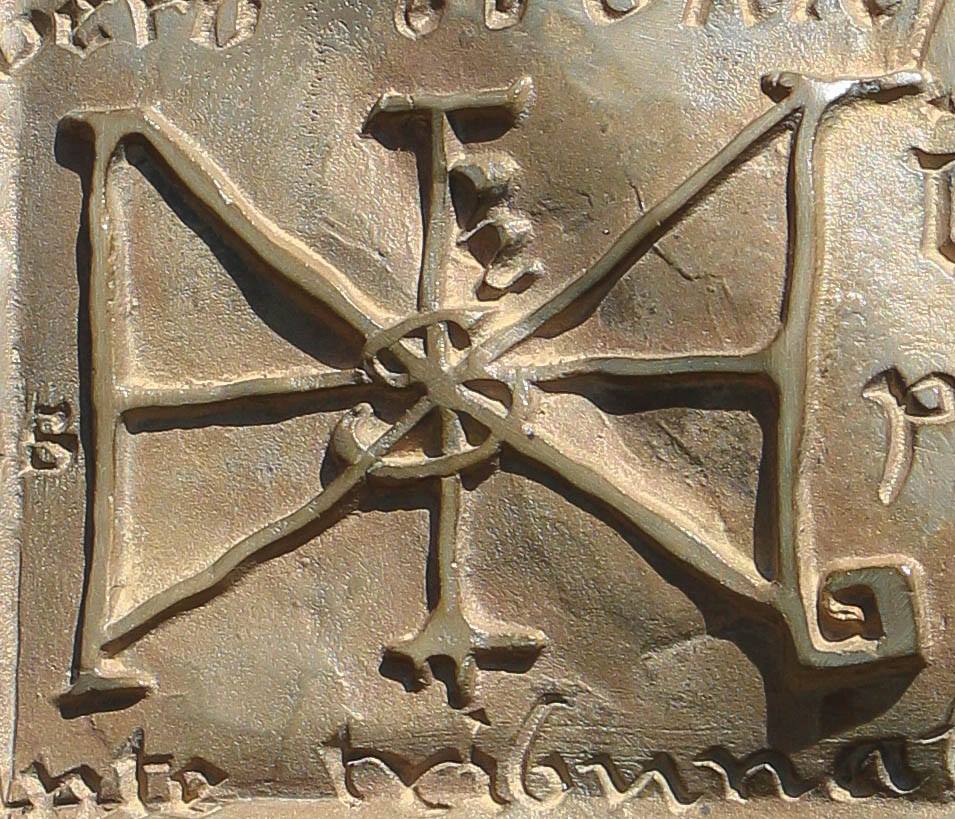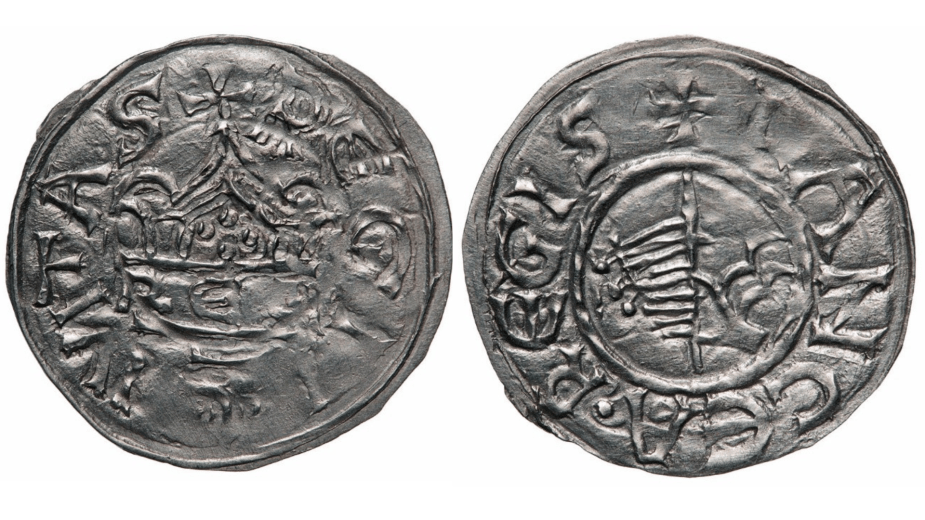
The Lance of King Saint István
A holy spear may have strengthened the reign of King István
Since 1083, 20 August has been the feast of King Saint István and the foundation of the Christian Hungarian state. One of the sacral royal insignia of the last Hungarian prince and the first Hungarian king was a flag lance, which symbolised, among other things, sovereignty. Historians speculate that the Holy Roman Emperor Otto III may have given a spearhead to István or his father, Géza, as a symbol of power. This is confirmed by the account of a French monk and chronicler, Adémar de Chabannes, who died around 1035, which is the first and only written source for István’s spear. Tradition has it that it was a replica of the weapon used to wound Jesus on the cross.
“…he who possesses this Holy Spear and understands the powers it contains, holds the fate of the world in his hands for right or wrong.” (Trevor Ravenscroft: The Spear of Destiny)

Several countries claim to have a fragment of the spear
The Holy Spear, also known as the “Spear of Destiny”, has been one of the most popular and sought-after relics practically since the Roman Empire made Christianity the state religion. The legend of the Holy Lance is as much a contemporary of the Holy Grail as the lost Ark of the Covenant.
Indeed, the popularity of the relics of the Passion has led to the appearance of several versions of them. It is estimated that at one time, around thirty different nails were associated with the crucifixion of Christ, and the Holy Spear is a similar relic, as several countries claim to have a fragment of it.

Some of these have been declared fakes by the Roman Catholic Church, but there are still three spearheads that experts believe may be genuine. One is from Armenia, where a 17th-century reliquary in the Manoogian Museum houses a spearhead believed to be a sacred object. Although the artifact appears to be quite old, the earliest reference to it comes from a 13th-century manuscript.
The other alleged Holy Spear is preserved under the dome of St Peter’s Basilica in Rome, although the Vatican has never claimed its authenticity. It is the oldest documented spearhead, dating back to the 6th century.
The most famous of them all, however, is the Spear of Vienna, which is said to have belonged to Saint Maurice and then Constantine the Great, and both men attributed their military successes to the relic.

Interestingly, the weapon was also sought by Hitler during the Second World War, and after the war, it was allegedly found thanks to a tip from a captured SS officer. Experts carried out several scientific analyses of the Vienna spear and compared it with archaeological examples of its Roman Empire counterpart. They concluded that the spear may be old enough to be the ‘real’ spear, but they could not confirm whether it could be the relic in question.
Miraculous power attributed to the holy relic
The spear, now kept in the Hofburg treasury in Vienna, is an object of extraordinary historical value. Legend has it that the spear, which is 23 centimetres long and housed in a 14th-century gold sheath, has sacred powers, making the possessor invincible and capable of controlling the world.
It is one of humanity’s most sacred and sought-after artefacts, and was considered to have miraculous powers by the German rulers of the Middle Ages. They carried the weapon with them into battles and conquests, believing that they owed their important successes to the spear. So it is no coincidence that many countries regarded it as a badge of power, and many replicas were made.
One such example is a copy in Krakow, made by the Holy Roman Emperor Otto III for the Prince of Poland, Boleslav I (better known as Boleslav the Brave), who claimed to benefit from the power of the “real spear by having a piece of it melted into it.”

The two monarchs met in Gniezno, the first capital of Poland, where the Holy Roman Emperor presented the copy of the relic to the monarch. This symbolized Otto III’s acceptance of the establishment of the Kingdom of Poland, which became a vassal of the Holy Roman Empire, but the Poles’ tax liability was abolished. This was part of the Emperor’s expansionist ambitions in Eastern Europe and the strengthening of his influence through alliances with Poland and Hungary.
It came to Hungary as a symbol of power
Otto, therefore, wanted to maintain good relations not only with the Poles but also with the Hungarians. According to the records, this is how a replica of the Holy Lance from Vienna came to St István, the first king of Hungary, although the sources are vague about the circumstances. It may have been sent to Prince Géza by the Holy Roman Emperor Otto III as a symbol of power, and thus inherited by István. Other documents, however, suggest that the emperor sent a piece of his ‘own spear’ to the first Hungarian king as a confirmation of the power of Saint István.

The first and only written source on the spear of István is thought to be the contemporary French chronicler Adémar de Chabannes, who died around 1035. He wrote a chronicle on the history of the Aquitanians and the French, of which only a 12th-century version with additions has survived, which noted:
“…and St Bruno converted the province of Hungary… He baptized the King of Hungary, who was called Gouz, and changed his name in baptism to István (Stephanus), which the Emperor Otto chose on the anniversary of István’s baptism, and gave him the kingdom in full possession, permitting him to carry the holy lance everywhere, as was the custom of the emperor himself, and relics from the Lord’s nail, and the holy Mauritius lance as his own. The above-named king commanded Saint Bruno to baptize his son also, and gave him the name which he had given to his own, István (Stephanus). And to this son István, the emperor Otto married the sister of Henry, the future emperor…”
No one doubted the authenticity of the relic at the time, of course, and it can be found on coins of the period and on the coronation Robe. According to the chronicle, the Emperor Otto III thus “allowed the Lord of the Hungarians to have his kingdom in full freedom”, while also granting István permission to carry the sacred spear.
The Coronation Cloak

What is the Hungarian coronation robe about? – The amazing story of a garment of unparalleled significance…
The spear can also be seen on the coronation cloak, which, according to the inscription embroidered on it, was made and presented to the Church of the Virgin Mary in Székesfehérvár by King István and Queen Gizella in 1031. St István is depicted wearing this jeweled crown with the winged lance in his right hand and the orb in his left.

Biblical figures and scenes, the image of King István and Gizella, Latin texts and inscriptions, a summary of Christian salvation history – all this is displayed on a single piece of clothing of unparalleled significance, the Hungarian coronation robe, which has undergone several transformations and alterations during its nearly thousand-year existence.

The cloak was originally intended as a vestment. The gold thread embroidery presents a complex pictorial programme, with scenes of texts written in rhyming hexameters, summarising the Christian doctrine of salvation history, as the first examples of theological literature in Hungary. Its significance is further enhanced by the fact that it was used as the coronation robes of Hungarian kings until the 20th century.

Over the years, it has undergone several alterations: it was first modified around the turn of the 12th and 13th centuries, when sleeveless cloaks that fell from the shoulders came into fashion, and when the collar was added. It was later repaired, lined, and altered several times, using pieces of another vestment from the same period. The last alteration was made at the coronation of Franz Joseph in 1867.

The first silver Denarius of King István
The image of the Holy Spear was also used on the Lancea Regis denarius, the coin of the Hungarian king.
King István also minted silver coins in connection with the foundation of the state. The denarii, known as Lancea Regis, are among the most interesting pieces of medieval Hungarian coinage. The first coin minted by King István on the occasion of his coronation is recorded in research as the first Hungarian coin. This coin is exceptional in several respects.

In 1968, during excavation work in Nagyharsány, shiny silver coins in an earthenware jar were turned up from the ground. The mine manager, Schmieder József, informed the Janus Pannonius Museum in Pécs about the incident, from where archaeologist Kiss Attila arrived on the scene and immediately recognised that the find was unusual. Among the coins were previously known but not yet precisely identified coins. The Lancea Regis is a very rare type, with about 50 known to exist.
Studies point out that the first Hungarian king in the denarius of Nagyharsány shows the “king’s spear” resting on a slightly curved palm with the fingers almost extended horizontally, and the weapon is only held by the thumb against the palm, so the palm is not gripped, held, or squeezed by the hand. This scene, according to some scholars, symbolizes the handing over of the king’s spear from the hand of God, which can be seen as ‘the presentation of the heavenly investiture of István, inseparable from the ancient prayer that recurs in the Egbert ritual: Lord, give your servant, our prince, a heavenly weapon.”

On the obverse was the inscription +LANCEA REGIS, meaning KING’S LANCE, and on the medal’s reverse was the familiar inscription +REGIA CIVITAS, meaning KING’S CITY. The special coins were further examined at the Hungarian National Museum, where numismatist Gedai István worked on them in detail. The newly discovered treasure trove soon reshaped the ideas about the beginnings of Hungarian coinage.
The research has found that the coin, previously thought to be a modern forgery and then a Bavarian counterfeit, is probably the first Hungarian coin minted by St István, probably on the occasion of his coronation. This means that the denarius with the inscription +STEPHANUS REX, previously considered the first Hungarian coin, has been relegated to second place. The large number of coins with the inscription +LANCEA REGIS has been confirmed on several points. With the help of the foreign mintmarks found in the hoard, the find was dated with great certainty to the beginning of the 11th century, i.e., to the reign of King St István.

The obverse depicts a hand holding a spear extending from a cloud in the inscription. The spear was an extremely important symbol of power in the Middle Ages. It is also known from sources that István’s father, Prince Géza, had the permission of the Holy Roman Emperor Otto III to possess a spear symbolising royal sovereignty, which István could inherit from him. The fact that István can be seen holding a spear on his coronation robes is a further indication of this. The hand extending from the cloud probably represents the hand of God, symbolising the celestial origin of power.

The reverse features a Carolingian church design within a circular inscription, accompanied by the abbreviation RECI. The reverse features a Carolingian influence; the inscription is a strong representation of the Latin name of Regensburg, Regina Civitas. The medal design expresses with strong symbolism the birth of a sovereign kingdom at the dawn of the 11th century, and the power and authority of King István I demanded that he exercise his right to mint coins as a sovereign monarch.

The parallels of the medal also provide further support for the theory: the letters of the inscription closely parallel the cross that King István’s wife, Queen Gizella, had made for her mother’s tomb. In addition, the Carolingian temple decoration on the reverse also shows Hungarian stylistic features, with the characteristic palmette decoration of the Hungarian home-takers’ period, and its closest parallel is to the costume decoration of the tombs of Kistokaj, dating from the conquest of the Hungarian homeland.
There is currently no consensus in the literature on the minting place of the Lancea Regis type denarius, and thus on the master minter, but the Bavarian influence is certainly attested. However, let us not forget that St King István issued a rare gold coin as well. According to some sources, it may not have been issued by King István, but by King László I at the time of his canonisation. A total of three pieces have survived. Weight: 4.52 g, identical to the Byzantine solidus. Inscription: STEPHANVS REX and PANNONIA.

Sources: https://www.penzmuzeum.hu/ and Magyar Nemzeti Múzeum, http://www.history. karpat.hu
Dear Readers, I can only make this content available through small donations or by selling my books or T-shirts.
Please, support me with a coffee here: https://www.buymeacoffee.com/duhoxoxa
You can check out my books on Amazon or Draft2Digital. They are available in hardcover, paperback, or ebook:
https://www.amazon.com/dp/198020490X or at https://books2read.com/b/boYd81

My work can also be followed and supported on Patreon: Become a Patron!http://Become a Patron!
Become a Patron! Donations can be sent by PayPal, too: https://tinyurl.com/yknsvbk7


Subscribe to my newsletter here: https://tinyurl.com/4jdjbfkn

